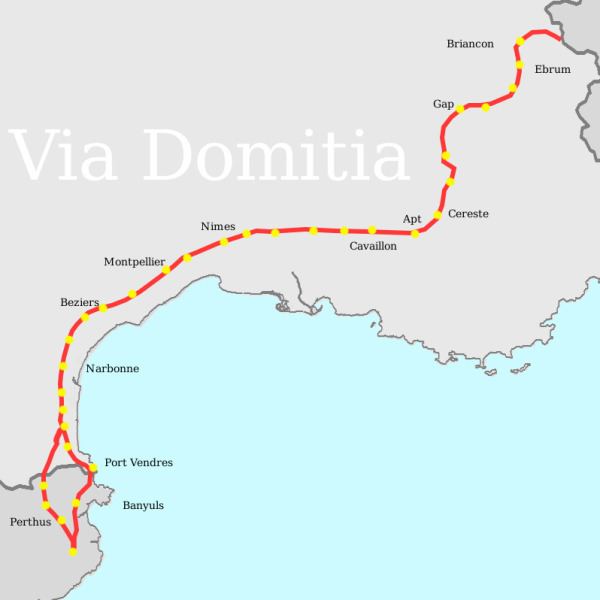 | ||
Similar | ||
Trek via domitia 2014
The Via Domitia was the first Roman road built in Gaul, to link Italy and Hispania through Gallia Narbonensis, across what is now southern France. The route that the Romans regularised and paved was ancient when they set out to survey it, so old that it traces the mythic route travelled by Heracles. Hannibal traversed it on his way from Hispania to Italy.
Contents
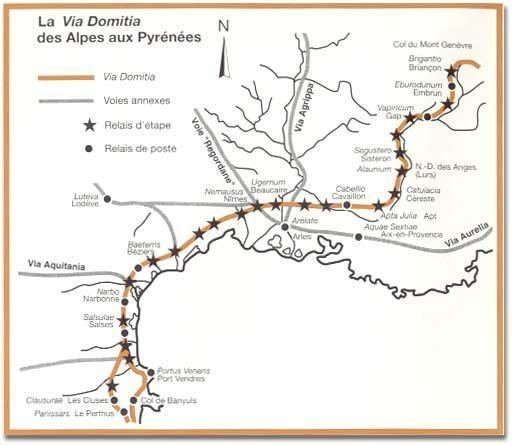
The land for the route was provided by Massilia in exchange for Rome's protection. It was constructed in 118 BC by the proconsul, Gnaeus Domitius Ahenobarbus, whose name it bore; it was built around the same time the first Roman colony in Gaul, Colonia Narbo Martius (Narbonne) was founded. The Via Domitia connected Italy to Hispania. Crossing the Alps by the easiest passage, the Col de Montgenèvre (1850 m), it followed the valley of the Durance, crossed the Rhône at Beaucaire passed through Nîmes (Nemausus) then followed the coastal plain along the Gulf of Lion. At Narbonne, it met the Via Aquitania (which led toward the Atlantic Ocean through Toulouse and Bordeaux). Thus Narbonne was a crucial strategic crossroads of the Via Domitia and the Via Aquitania, and it was an accessible, but well-defendable, port at that time. This "cusp point" in the Roman westwards expansion and ensuing supply, communication and fortification was a very important asset, and was treated as such (see Narbonne). In between the cities that it linked, the Via Domitia was provided with a series of mansiones at distances of a day's journey for a loaded cart, at which shelter, provender and fresh horses could be obtained for travellers on official business.
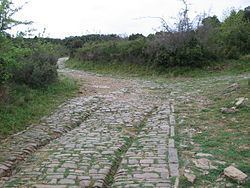
The route as it was in Late Antiquity is represented in schematic fashion on the Tabula Peutingeriana.
Route

This route can be traced on topographical maps overprinted with the ancient route, in G. Castellve, J.-B. Compsa, J. Kotarba and A. Pezin, eds. Voies romaines du Rhône à l'Èbre: Via Domitia et Via Augusta (DAF 61) Paris 1997.
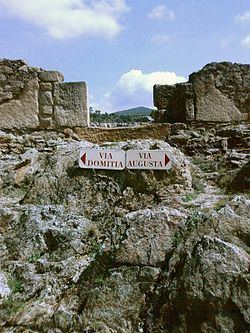
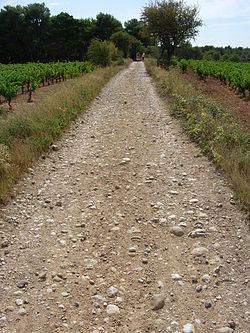
At Ruscino, the road separates in two: the Inland Route and the Coastal Route, which rejoin at La Junquera.
Coastal Route
Inland Route
Rejoins at:
Here the Via Augusta begins.
Roman bridges
For an overview of the location of Roman bridges, see List of Roman bridges.
There are the remains of several Roman bridges along the road, including the Roman Bridge of Saint-Thibéry, the Pont Ambroix at Ambrussum, the Pont Julien and the Pont Serme.
